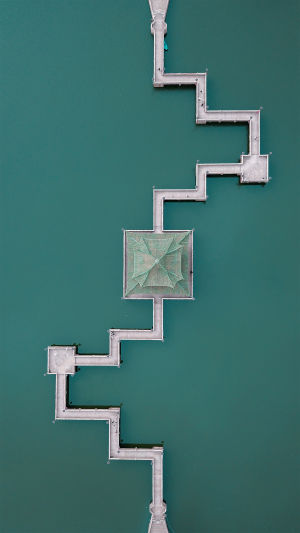Aerial photography is a captivating art that allows photographers to capture stunning images from a unique perspective.
It involves capturing photographs from above, usually from a helicopter, drone, or airplane. The resulting images are often breathtaking, providing a bird's eye view of landscapes, cityscapes, and other subjects that would be impossible to capture from the ground. If you're an advanced photographer looking to take your aerial photography to the next level, here are some tips to consider:
1. Choose the Right Equipment
The right equipment is essential for capturing stunning aerial photographs. If you're using a drone, make sure to invest in a high-quality drone with a good camera. Drones with higher-resolution cameras and better sensors will produce better-quality images.
Additionally, you'll want to invest in ND filters, which can help control exposure and reduce glare. If you're using an airplane or helicopter, make sure to choose a seat with a good view and consider using a telephoto lens to capture details from a distance.
2. Plan Your Flight Path
Before you take off, plan your flight path carefully. Think about the subject you want to capture and the angle you want to shoot from. You'll also want to consider the time of day and the weather conditions. Keep in mind that the sun's position and the angle of the light can have a significant impact on your images.
3. Shoot in Manual Mode
When shooting aerial photographs, it's best to shoot in manual mode. This will allow you to have full control over the camera settings, including aperture, shutter speed, and ISO. It's important to note that the lighting conditions can change rapidly when you're shooting from above, so you'll need to be able to adjust your settings quickly to get the perfect shot.
4. Use a Fast Shutter Speed
A fast shutter speed is essential for capturing sharp aerial photographs. Since you'll be shooting from a moving vehicle, you'll want to use a shutter speed of at least 1/1000th of a second to avoid motion blur. If you're shooting in low light conditions, you may need to increase your ISO to compensate.
5. Experiment with Angles and Perspectives
One of the benefits of aerial photography is the ability to capture unique perspectives and angles. Experiment with different angles and compositions to create visually striking images. Consider shooting straight down to capture patterns and textures, or try tilting your camera to create dynamic lines and angles.
6. Capture the Landscape
Aerial photography is particularly well-suited for capturing landscapes. To create a sense of depth and scale, include foreground elements in your images, such as mountains, trees, or buildings. Additionally, consider shooting during the golden hour (the hour after sunrise or the hour before sunset) to capture warm, soft light that can create a sense of drama and mood in your images.
7. Edit Your Images
Post-processing is an essential part of aerial photography. Once you've captured your images, use editing software to enhance them and bring out their full potential. Adjust the exposure, contrast, and saturation to create a balanced image. Additionally, consider using the clone stamp tool to remove distracting elements, such as power lines or other unwanted objects.
Aerial photography is a captivating art that can provide photographers with a unique perspective on the world.
By choosing the right equipment, planning your flight path, shooting in manual mode, using a fast shutter speed, experimenting with angles and perspectives, capturing the landscape, and editing your images, you can create stunning aerial photographs that will amaze and inspire your audience.
With practice and patience, you can take your aerial photography to the next level and produce images that are truly breathtaking.





